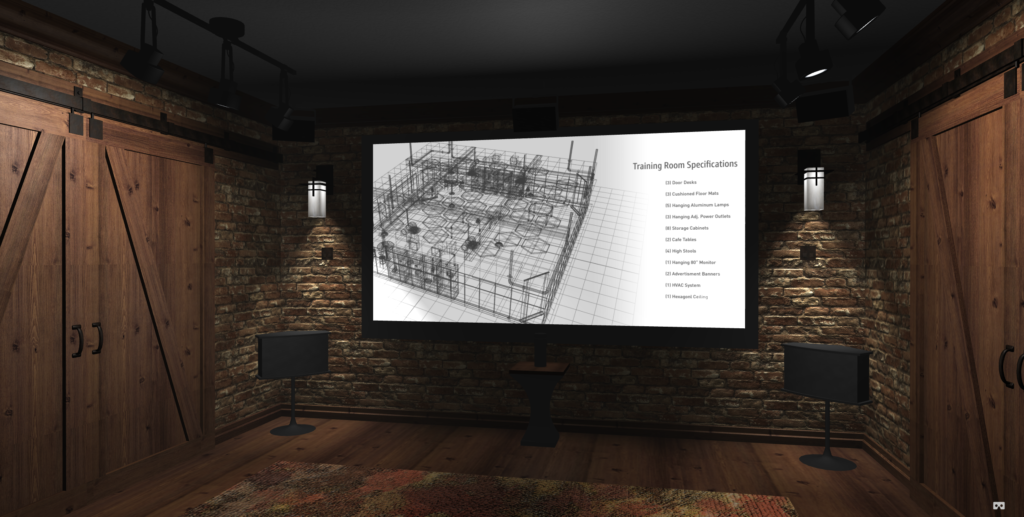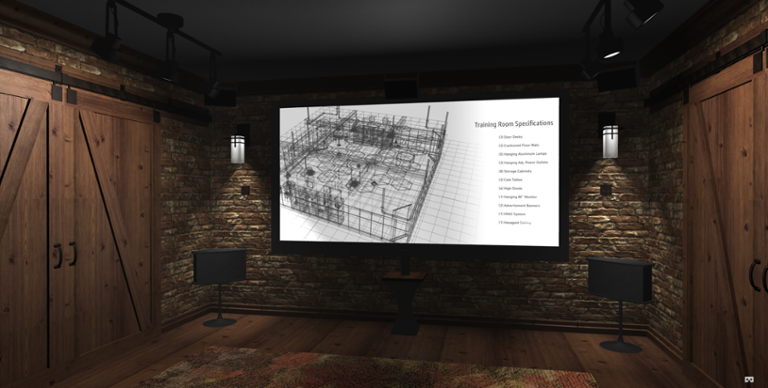 If you’re a developer interested in building virtual reality (VR), augmented reality (AR), and 3D environments, Amazon would dearly like you to use its new toolset, Sumerian. According to Amazon’s official blog post on the matter, Sumerian is supported by hardware that’s WebVR browser-compatible, including the Oculus Rift, HTC Vive, and iOS devices. Support for ARCore on Android devices is supposedly “coming soon.” The Sumerian package includes a web-based editor for creating scenes, importing assets, and the like; a library of pre-built objects and templates; a JavaScript scripting library; “hosts,” or character templates that can be modified to serve the developer’s needs; and, of course, integration with Amazon Web Services. Amazon claims that Sumerian allows those with little to no AR or VR experience to build AR and VR applications. In theory, even a novice developer can create a new scene and add a bunch of pre-built assets, then have those assets interact via pre-written scripts. (The screenshot above is representative of a “basic” Sumerian-generated experience.) Indeed, if your goal is to create a VR presentation in which a customized host narrates some text while some graphical element appears on a screen behind them, Sumerian should make easy work of that. Amazon is clearly thinking that a market of some sort will develop around VR employee education, virtual concierges, and training simulations. Your host could walk new hires through how to repair the company’s flagship product, or role-play a difficult customer interaction. And that’s certainly useful—although whether VR is necessary in that context is an open question. When it comes to building more complex AR and VR environments, though, developers may necessarily need quite a bit more experience. Just look at a game like ‘The Climb,’ for example, which asks players to scale virtual cliffs that seem terrifyingly realistic: You’re not building something that sophisticated without a team of tech pros, a lot of money, and some additional tools. Nonetheless, Sumerian could help you build a VR game or sample that, in turn, could allow you to land a job interview at a firm creating complicated VR products. If you’re interested in building out your VR-related portfolio, also consider creating some code samples in Unity or another platform, and posting those to GitHub. If you’re curious about VR developers’ best practices, check out the Oculus Developer Website, which includes some advice and tutorials. There’s also a neat HTC Vive tutorial for Unity. Should the market for AR and VR continue to grow, there will be lots of need for skilled tech pros who know how to create a whole new world.
If you’re a developer interested in building virtual reality (VR), augmented reality (AR), and 3D environments, Amazon would dearly like you to use its new toolset, Sumerian. According to Amazon’s official blog post on the matter, Sumerian is supported by hardware that’s WebVR browser-compatible, including the Oculus Rift, HTC Vive, and iOS devices. Support for ARCore on Android devices is supposedly “coming soon.” The Sumerian package includes a web-based editor for creating scenes, importing assets, and the like; a library of pre-built objects and templates; a JavaScript scripting library; “hosts,” or character templates that can be modified to serve the developer’s needs; and, of course, integration with Amazon Web Services. Amazon claims that Sumerian allows those with little to no AR or VR experience to build AR and VR applications. In theory, even a novice developer can create a new scene and add a bunch of pre-built assets, then have those assets interact via pre-written scripts. (The screenshot above is representative of a “basic” Sumerian-generated experience.) Indeed, if your goal is to create a VR presentation in which a customized host narrates some text while some graphical element appears on a screen behind them, Sumerian should make easy work of that. Amazon is clearly thinking that a market of some sort will develop around VR employee education, virtual concierges, and training simulations. Your host could walk new hires through how to repair the company’s flagship product, or role-play a difficult customer interaction. And that’s certainly useful—although whether VR is necessary in that context is an open question. When it comes to building more complex AR and VR environments, though, developers may necessarily need quite a bit more experience. Just look at a game like ‘The Climb,’ for example, which asks players to scale virtual cliffs that seem terrifyingly realistic: You’re not building something that sophisticated without a team of tech pros, a lot of money, and some additional tools. Nonetheless, Sumerian could help you build a VR game or sample that, in turn, could allow you to land a job interview at a firm creating complicated VR products. If you’re interested in building out your VR-related portfolio, also consider creating some code samples in Unity or another platform, and posting those to GitHub. If you’re curious about VR developers’ best practices, check out the Oculus Developer Website, which includes some advice and tutorials. There’s also a neat HTC Vive tutorial for Unity. Should the market for AR and VR continue to grow, there will be lots of need for skilled tech pros who know how to create a whole new world. Amazon's Sumerian Offers AR, VR Building Tools
 If you’re a developer interested in building virtual reality (VR), augmented reality (AR), and 3D environments, Amazon would dearly like you to use its new toolset, Sumerian. According to Amazon’s official blog post on the matter, Sumerian is supported by hardware that’s WebVR browser-compatible, including the Oculus Rift, HTC Vive, and iOS devices. Support for ARCore on Android devices is supposedly “coming soon.” The Sumerian package includes a web-based editor for creating scenes, importing assets, and the like; a library of pre-built objects and templates; a JavaScript scripting library; “hosts,” or character templates that can be modified to serve the developer’s needs; and, of course, integration with Amazon Web Services. Amazon claims that Sumerian allows those with little to no AR or VR experience to build AR and VR applications. In theory, even a novice developer can create a new scene and add a bunch of pre-built assets, then have those assets interact via pre-written scripts. (The screenshot above is representative of a “basic” Sumerian-generated experience.) Indeed, if your goal is to create a VR presentation in which a customized host narrates some text while some graphical element appears on a screen behind them, Sumerian should make easy work of that. Amazon is clearly thinking that a market of some sort will develop around VR employee education, virtual concierges, and training simulations. Your host could walk new hires through how to repair the company’s flagship product, or role-play a difficult customer interaction. And that’s certainly useful—although whether VR is necessary in that context is an open question. When it comes to building more complex AR and VR environments, though, developers may necessarily need quite a bit more experience. Just look at a game like ‘The Climb,’ for example, which asks players to scale virtual cliffs that seem terrifyingly realistic: You’re not building something that sophisticated without a team of tech pros, a lot of money, and some additional tools. Nonetheless, Sumerian could help you build a VR game or sample that, in turn, could allow you to land a job interview at a firm creating complicated VR products. If you’re interested in building out your VR-related portfolio, also consider creating some code samples in Unity or another platform, and posting those to GitHub. If you’re curious about VR developers’ best practices, check out the Oculus Developer Website, which includes some advice and tutorials. There’s also a neat HTC Vive tutorial for Unity. Should the market for AR and VR continue to grow, there will be lots of need for skilled tech pros who know how to create a whole new world.
If you’re a developer interested in building virtual reality (VR), augmented reality (AR), and 3D environments, Amazon would dearly like you to use its new toolset, Sumerian. According to Amazon’s official blog post on the matter, Sumerian is supported by hardware that’s WebVR browser-compatible, including the Oculus Rift, HTC Vive, and iOS devices. Support for ARCore on Android devices is supposedly “coming soon.” The Sumerian package includes a web-based editor for creating scenes, importing assets, and the like; a library of pre-built objects and templates; a JavaScript scripting library; “hosts,” or character templates that can be modified to serve the developer’s needs; and, of course, integration with Amazon Web Services. Amazon claims that Sumerian allows those with little to no AR or VR experience to build AR and VR applications. In theory, even a novice developer can create a new scene and add a bunch of pre-built assets, then have those assets interact via pre-written scripts. (The screenshot above is representative of a “basic” Sumerian-generated experience.) Indeed, if your goal is to create a VR presentation in which a customized host narrates some text while some graphical element appears on a screen behind them, Sumerian should make easy work of that. Amazon is clearly thinking that a market of some sort will develop around VR employee education, virtual concierges, and training simulations. Your host could walk new hires through how to repair the company’s flagship product, or role-play a difficult customer interaction. And that’s certainly useful—although whether VR is necessary in that context is an open question. When it comes to building more complex AR and VR environments, though, developers may necessarily need quite a bit more experience. Just look at a game like ‘The Climb,’ for example, which asks players to scale virtual cliffs that seem terrifyingly realistic: You’re not building something that sophisticated without a team of tech pros, a lot of money, and some additional tools. Nonetheless, Sumerian could help you build a VR game or sample that, in turn, could allow you to land a job interview at a firm creating complicated VR products. If you’re interested in building out your VR-related portfolio, also consider creating some code samples in Unity or another platform, and posting those to GitHub. If you’re curious about VR developers’ best practices, check out the Oculus Developer Website, which includes some advice and tutorials. There’s also a neat HTC Vive tutorial for Unity. Should the market for AR and VR continue to grow, there will be lots of need for skilled tech pros who know how to create a whole new world. 

